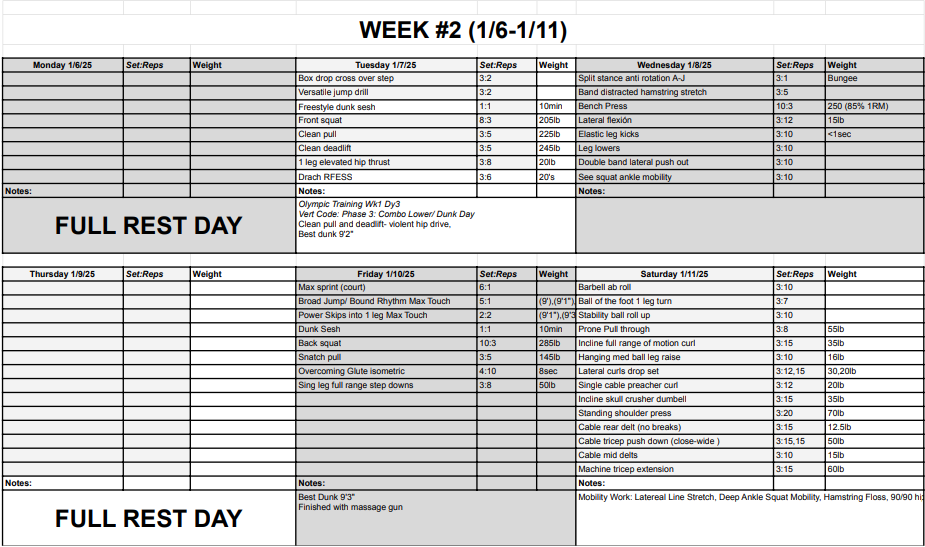Week two of my training journey has come and gone, leaving me with a mix of triumphs and sore muscles. After indulging in a two-day recovery period on Sunday and Monday, I felt rejuvenated and ready to tackle the challenges ahead.
Tuesday: Embracing Plyometrics and Olympic Lifts
The day began with my usual warm-up routine: a session with the massage gun to ease muscle tension, followed by static stretching to improve flexibility. Incorporating light plyometric movements like skipping and sprinting not only prepared my body for the workout but also contributes to enhancing my vertical jump performance.
I included isometric holds such as wall sits and glute bridges to activate key muscle groups. The main workout consisted of a series of bodyweight plyometric exercises. By allowing full recovery between sets and maintaining low repetition ranges, I targeted type II fast-twitch muscle fibers, essential for explosive power.
Transitioning to Olympic lifts, I focused on single lifts near my one-rep max for multiple sets, followed by lighter, higher-rep exercises to complement the main lift. This approach aimed to enhance neuromuscular recruitment, allowing for strength gains without significant muscle hypertrophy.
Wednesday: Prioritizing Rest and Recovery
Recognizing the importance of rest, I dedicated Wednesday to recovery and mobility work. Incorporating anterior core exercises strengthened my abdominals, and a heavy bench press session targeted high weight for low reps across multiple sets. This method effectively developed neuromuscular recruitment, enabling strength improvements without substantial increases in muscle size.
Friday: Revisiting Plyometrics and Olympic Lifts
Friday’s routine mirrored Tuesday’s, with a focus on plyometric exercises and Olympic lifts. Emphasizing explosive movements and strength development, I ensured adequate rest between sets to maintain performance quality.
Saturday: Upper Body Maintenance
After a week centered on lower body training, I dedicated Saturday to upper body maintenance, focusing on biceps, triceps, and shoulders. The goal was purely aesthetic—to maintain muscle mass and ensure a balanced physique. While upper body strength doesn’t directly contribute to vertical jump performance, maintaining muscle mass is important for overall balance and appearance.
This session was intense enough that later, when I tried to pick up my two-year-old daughter, my fatigued biceps protested, reminding me of the workout’s intensity. They cramped on me so tight I had to set her down. Who would have thought training you arms would make it so you couldn’t pick up your kids?
Conclusion
Week two presented its challenges, but each session brought me closer to my goals. Balancing intensity with adequate recovery remains crucial. Listening to my body and adjusting the training load as needed will help prevent overtraining and promote continuous improvement

